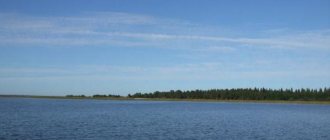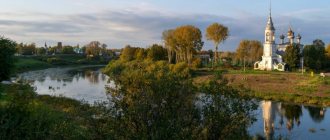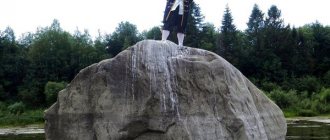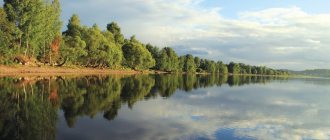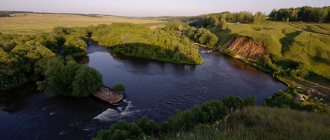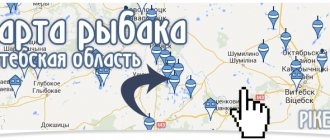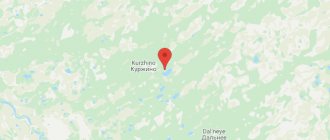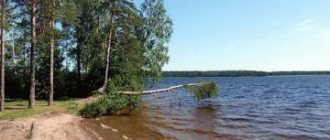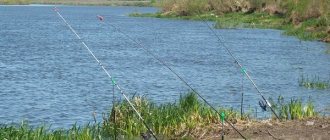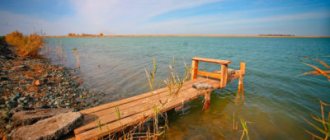a brief description of
It was created on September 23, 1937 after the abolition of the Northern Region (it was divided into the Vologda and Arkhangelsk regions). The regional center is the city of Vologda.
The Vologda region is one of the most developed regions of the Northwestern Federal District. Favorable climate, well-developed transport and tourism infrastructure contribute to a constant increase in tourist flow. In this sense, the region is completely
definitely one of the most interesting in the northwestern part of Russia.
Economically, the region is also quite well developed; moreover, it is ahead of the Russian average in many indicators. In addition, the region's economy can be described as very diverse - a large number of different goods are produced here.
Geography of the Vologda region
The Vologda region is an internal region and does not border with any state. Of the regions of Russia, it borders on the regions of Yaroslavl, Kostroma, Tver, Leningrad, Kirov, Arkhangelsk, Novgorod, Tver and the Republic of Karelia. From north to south, the length of the Vologda region is 400 kilometers, from east to west - 700 kilometers.
The Vologda region is located on the East European Plain. The relief is hilly, there are lowlands and also plains. The region is characterized by a large number of rivers, lakes and swamps. On the territory of the Vologda region there is a watershed between the basins of the Atlantic and Arctic oceans, as well as the Caspian Sea.
There are a number of hills in the region: Vologda, Andomskaya, Galichskaya, Verkhnevazhskaya and others. There are no high mountains; the highest point in the Vologda region is Mount Malgora (Vepsovskaya Upland, height 304 meters).
4.5% of the region's area is occupied by water surface, these are lakes and rivers. There are four thousand lakes, the largest: Beloe, Vozhe, Kubenskoye, Sheksninskoye, as well as the Rybinsk reservoir. There are a number of large rivers: Sheksna, Vologda, Sukhona, Dvinitsa, Andoma and others. About 12% of the region's territory is occupied by swamps, which is quite a lot, but is explained by the peculiarities of the relief - alternation of hills and lowlands, in which swamps are usually located.
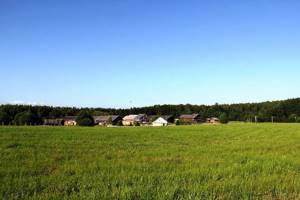
home
Andreev D. Study of lakes. Characteristics of Lake Chernoe / D. Andreev, T.V. Sudakova // Research works of schoolchildren on ecology / ed. L.A. Korobeynikova. – Vologda, 1997. – pp. 31-35. read
Vorobyov G. Can two rivers flow out of a lake? / G. Vorobyov // Steps. – 1997. – October 9. – P. 5.
About the expedition to Tikhmangozero in the Vytegorsky district.
read
Vorobiev G.A. Vologda lake region / G.A. Vorobyov // Svirel. – 2000. – No. 8. – P. 8-9. read
Vorobiev G.A. Landscape typology of small lakes and the possibilities of their economic use: (on the example of the western part of the Vologda region): abstract. dis. ...cand. geogr. Sciences / G.A. Vorobiev. – L.: B.I., 1974. – 15 p. read
Vorobyov G. A. Memorable lakes of Vytegra region / G. A. Vorobyov // Vytegra: local historian. alm. – Vologda, 2008. – Issue. 1. – pp. 325-333. read
Evgrafova I. Ecological certification of lakes in the Syamzhensky region / I. Evgrafova // News of the Vologda Society for the Study of the Northern Territory. – Vologda, 2004. – Issue. 13. – pp. 130-132. read
Ivicheva K.N. Bioindication approaches to assessing the quality of surface waters using the example of lakes Beloye and Kubenskoye / K.N. Ivicheva, I.V. Filonenko // Young researchers for the regions: materials of the All-Russian Federation. scientific conf. T. 1 / [rep. ed. A.A. Plekhanov]. – Vologda, 2012. – pp. 346-348. read
Study of ecosystems of lakes Cherny and Kovzhsky Verkhovazhsky region / A. Chernyatkin [et al.] // Collection of scientific works of students and graduate students of VSPU. – Vologda, 1996. – Issue. 4. – pp. 223-236. read
Klygina I.V. Vologda lake region / I.V. Klygina // Nature of the native land. – Vologda, 2001. – pp. 36-41.
About White Lake, Lake Vozhe, Lake Kubenskoye.
read
Lichke E. The sky looks into the depths of the lakes: Natural resources of the region / E. Lichke // Red Banner. – October 8. – 1998. – P. 3-4.
About the lakes of the Vytegorsk region - Kovzhsky, Kemozero, Velikoy, Shimozero, Onega, Tudozero, Kushtozero, Megorsky lakes.
read
Lobunicheva E.V. Changes in the water quality of Lake Lozsko-Azat / E.V. Lobunicheva // NSO Bulletin: Ser. Physics, mathematics and natural sciences. – Vologda, 2004. – Subject. issue : Study of biological and landscape diversity of the Vologda region. – pp. 34-39. read
Lobunicheva E.V. Exploring the small lakes of the Vozhegodsky region: [Svyatoe, Pertozero, Chunozero, Dolgoe] / E.V. Lobunicheva, M.Ya. Borisov, N.V. Dumnich // Vozhega: local historian. alm. – Vologda, 2008. – Issue. 2. – pp. 149-160. read
Ovsyankina Yu. Lake Gagarye is a unique wetland ecosystem of the Verkhovazhsky region / Yu. Ovsyankina, N. Shalyapina // Vazhsky region in the history of Russia: past and present: (“Lomonosov and the Russian North”): materials of scientific and practical research. Conf., 8-9 Nov. 2001 / [ed. : T.A. Pogozheva]. – Verkhovazhye, 2001. – From 83. read
Lake resources of the Vologda region: collection. Art. / [ed. : A.A. Lyapkina, N.N. Shevelev]. – Vologda: VSPI, 1981. – 150 p. read
Ozeretskovsky N.Ya. Traveling along lakes Ladoga and Onega / N.Ya. Ozeretskovsky. – Petrozavodsk: Karelia, 1989. – 208 p. : ill. read
Kozlov S. Assessment of anthropogenic impact on the PTC of Lake Nazhmozero / S. Kozlov, S. Bystrov, N. Zagulyaev // Research works of schoolchildren in ecology / ed. L.A. Korobeinikov. – Vologda, 2004. – pp. 21-24. read
Ryzhkov L.P. State and capabilities of natural ecosystems of Lakes Ladoga and Onega / L.P. Ryzhkov // Large lakes of Europe - Ladoga and Onega: abstract. report conf. – Petrozavodsk, 1996. – P. 5-7. read
Structure and functioning of acid lake ecosystems / resp. ed. V.T. Komov. – St. Petersburg. : Nauka, 1994. – 249 p. read
Chudnovsky S.M. Study of the aeration regime of Lake Svyatoe / S.M. Chudnovsky, S.I. Seltsova // Problems of ecology on the way to sustainable development of regions: materials of the international. scientific-technical Conf., May 17-19, 2001 / [rep. ed. L.I. Sokolov]. – Vologda, 2001. – pp. 21-23. read
Shabunov A.A. Study of lake ecosystems of the Vologda region: textbook. allowance / A.A. Shabunov, N.M. Radchenko. – Vologda: IC VIRO, 2003. – 158, [1] p. : ill. read
Shutova N. “Little Baikal” of the Vologda land / N. Shutova, O.V. Bychikhina // Dvina horizons / [ed. N.V. Sheptyakov]. – Kotlas, 2008. – Issue. 3. – pp. 130-140.
Description and comparative characteristics of the Lower Tozmensky (Shchuchye) Lake, located in the Veliky Ustyug district of the Vologda region.
read
White Lake
Anthropogenic influence on large lakes in the North-West of the USSR. Part 1. Hydrology and hydrochemistry of Lake Beloe / resp. ed. : V.N. Adamenko, T.I. Malinina. – L.: Science, Leningrad branch, 1981 – 252 p. read
Vorobiev G.A. Blue necklace of Beloozer / G.A. Vorobyov // Belozerye: local historian. alm. – Vologda, 1998. – Issue. 2. – pp. 296-307. read
Gusakov B.L. White Lake: Past, present and future / B.L. Gusakov. – L.: Gidrometeoizdat, 1983. – 111 p. read
Dumnich N. Assessment of organic pollution of Lake Belye based on the state of the zooplankton community / N. Dumnich, E. Kukina // Collection of scientific works of students and graduate students of VSPU. – Vologda, 1997. – Issue. 5. – pp. 198-208. read
Konovalov E. Ecological framework of the White Lake basin / E. Konovalov // Vestnik NSO. Ser. Physics, mathematics and natural sciences / [chap. ed. M.A. Beznin]. – Vologda, 2008. – Issue. 6. – pp. 60-67. read
Kurdin V.P. Soils of the White Lake / V.P. Kurdin // Proceedings of the Institute of Reservoir Biology. – 1960. – No. 3(6). – pp. 301-306. read
Assessment of anthropogenic impact on the natural complex of Lake Beloye / M. Zakharova et al. // Research works of schoolchildren in ecology / VSPU; state region ecologist. fund. – Vologda, 1997. – P. 35-42: table. read
Shchukina I.G. Navigation on White Lake before and after digging the Belozersk bypass canal / I.G. Shchukina // Kirillov: local historian. alm. – Vologda, 1997. – Issue. 2. – pp. 87-100. read
Lake Vozhe
Borisov M.Ya. Natural features of the Lake Vozhe catchment area / M.Ya. Borisov, N.L. Bolotova // Vozhega: local historian. alm. – Vologda, 2008. – Issue. 2. – pp. 126-141. read
Borisov M.Ya. Features of the functioning of the “Watershed-Lake Vozhe” system and its impact on the fish population: abstract of thesis. dis. ...cand. biol. Sciences / M.Ya. Borisov. – Petrozavodsk: [b. i.], 2006 (Vologda: NCEI). – 27 s. read
Hydrobiology of lakes Vozhe and Lacha: in connection with the forecast of the quality of waters transferred to the south / [M.F. Veselova and others]. – L.: Nauka, Leningrad branch, 1978. – 276 p. read
Hydrology of lakes Vozhe and Lacha: in connection with the transfer of northern waters into the river basin. Volga / [M.F. Veselova, V.A. Kirillova, A.F. Izotov]. – L.: Nauka, Leningrad branch, 1979. – 288 p. read
Zhakov L.A. Lake Charondskoe (Vozhe) and its surroundings / L.A. Zhakov, L.V. Zhakova // Vozhega: local historian. alm. – Vologda, 1995. – Issue. 1. – pp. 72-90. read
About the fate of Lake Vozhe / N.L. Bolotova and others // Vozhega: local historian. alm. – Vologda, 2008. – Issue. 2. – pp. 105-125. read
Lakes Lacha and Vozhe: materials of complex research / rep. ed. : I.M. Raspopov, T.I. Malinina. – L.: Science, Leningrad branch, 1975. – 35 p. read
Reshetnikov Yu.S. Eutrophication of Lake Vozhe and the fish part of the community / Yu. S. Reshetnikov, N.L. Bolotova, O.V. Zuyanova // Ecological problems of the North of the European territory of Russia: abstract. report All-Russian meeting – Apatity, 1996. – P. 74-75. read
Khomutova I. Description of Lake Vozhe / I. Khomutova // News of the Vologda Society for the Study of the Northern Territory. – Vologda, 2001. – Issue. 9. – pp. 146-147. read
Shabunov A.A. Changes in the Lake Vozhe ecosystem due to anthropogenic impact: monograph. / A.A. Shabunov, N.M. Radchenko. – Vologda: VoGTU, 2011. – 83 p. : ill. read
Kubenskoye Lake
Bely A.V. Problems of ecology of Lake Kubenskoye and ways to solve them / A.V. Bely, M.M. Polyakov // Scientific support of environmental protection and rational use of natural resources: scientific and practical materials. conf. – Vologda, 1997. – pp. 9-16. read
Bolotov O. Limnological features of Lake Kubenskoye and water quality under anthropogenic load // Collection of scientific works of students and graduate students of VSPU / ch. ed. M.A. Beznin. – Vologda, 1996. – Issue. 4. – pp. 237-250. read
Koregina E. Ecological research and practical work on preserving the coastal zone of the southern coast of Lake Kubenskoye / E. Koregina // Let's preserve the natural environment and cultural heritage of the Vologda region: materials of the conference. / [rep. ed. T.A. Onishchenko]. – Kaduy: [b.i.], 2008. – P. 42-43. read
Kubenskoye Lake: materials of complex research / [ed. : T.I. Malinina, I.M. Raspopov]. – L.: Science, Leningrad branch, 1974. – 31 p. read
Maleva N. Ecological characteristics of Lake Kubenskoye as a source of water supply for the city of Vologda / N. Maleva, N. Dumnich // Collection of scientific works of students and graduate students of VSPU. – Vologda, 1998. – Issue. 6. – pp. 223-237. read
Mezhakov A.P. Kubenskoye Lake and its fisheries / A.P. Mezhakov. – St. Petersburg. : b.i., 1855. – 8 p. – Reprint from a magazine. "Bulletin of the Imperial Russian Geographical Society." – 1855. – Issue. 1. read
Lake Kubenskoye. In 3 hours. Part 1. Hydrology / ed. T.I. Malinina. – L.: Science, Leningrad branch, 1977. – 306 p. read
Lake Kubenskoye. In 3 hours. Part 2. Hydrochemistry, bottom sediments, plant communities / resp. ed. THEM. Raspopov. : M.; L.: Nauka, Leningrad department, 1977. – 220 p. read
Lake Kubenskoye. At 3 hours. Part 3. Zoology / I.I. Nikolaev and others - L.: Science, Leningrad department, 1977. - 168 p. read
Radchenko N.M. Anthropogenic impact on the ecosystem of Lake Kubenskoye: monograph / N.M. Radchenko, A.A. Shabunov. – Vologda: VoGTU, 2008. – 84 p. read
Comparative characteristics of the hydrochemical and hydrobiological state of Lake Kubenskogo / V.I. Rodinov [and others] // News of the Academy of Sciences of the Latvian SSR. – 1987. – N 7 (480). – pp. 108-119. read
Trunova L. Bottom fauna of Lake Kubenskoye / L. Trunova // Collection of scientific works of students and graduate students of VSPU. – Vologda, 2001. – Issue. 9. – pp. 189-197. read
Lake Onega
Bogoslovsky B. Onego / B. Bogoslovsky, Yu. Georgievsky. – L.: Gidrometeoizdat, 1969. – 119 p. : ill. read
Bolotova N.L. Prionezhye - water region / N.L. Bolotova // Vytegra: local historian. alm. – 1997. – Issue. 1. – pp. 306-324. read
Lake Onega. Problems of its eutrophication / T.P. Timakova and others // Large lakes of Europe - Ladoga and Onega: abstract. report conf. – Petrozavodsk, 1996. – P. 64-66. read
Conservation of biodiversity of natural complexes of the Lake Onega catchment area in the Vologda region / ed. : N.L. Bolotova et al. – Vologda: VSPU, 2008. – 265 p., [12] l. color ill. read
Filippov D.A. Structure and dynamics of ecosystems of floodplain swamps in the Lake Onega basin (Vologda region): abstract. dis. ...cand. biol. Sciences / D.A. Filippov. – Syktyvkar: [b. i.], 2008 (Yaroslavl) (Yaroslavl State University). – 23 s. read
Ecosystem of Lake Onega and trends in its changes / [T.V. Efremova, N.V. Altshuller, T.E. Gershenzon et al.]. – L.: Science, Leningrad branch, 1990. – 264 p. : ill. read
Climate
The climate of the region is moderate continental. Summer is short, winter is long but quite mild. In the eastern part of the Vologda region, the climate is more severe, the average annual temperature difference reaches 3 degrees Celsius. Average climate data is as follows:
- The number of frost-free days per year is 120;
- Number of days with snow cover – 160;
- Annual precipitation – 570 mm;
- February temperature 11.3;
- July temperature is 17.4.
Maximum precipitation occurs in summer. At the same time, evaporation is quite low, so there are many swamps in the area. Reservoirs usually freeze in November and become ice-free at the end of March, but in reality these indicators can differ by even a month, especially in recent years, when certain climatic anomalies have been observed throughout the North-West region (warm winters, etc.).
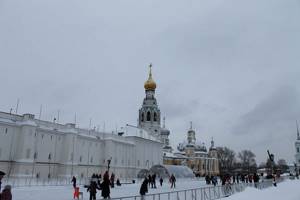
Population
The population of the Vologda region is 1,183,850 people. The urban population accounts for 72%, and the regional density is 8.2 people per square kilometer. In Russia, the Vologda region ranks 42nd in terms of population, and 56th in terms of population density.
The population is declining; the maximum was recorded back in 1987 - 1,355,000 people. The main reasons for the decline in population are that migration to other regions prevails over the number of visitors to the region, mortality is higher than the birth rate. However, such a failure is typical for almost all regions of the Russian Federation; it is also worth noting that these indicators are significantly improving and there is a possibility that the Vologda region will be able to achieve population growth in the foreseeable future. Here is a comparative table for several years (data are given per 1000 population).
| Year | Fertility | Mortality | Difference |
| 2000 | 8,6 | 15,7 | -7,1 |
| 2005 | 10,5 | 18,8 | -8,3 |
| 2008 | 12 | 16,3 | -4,3 |
| 2012 | 13,9 | 15 | -1,1 |
| 2017 | 11,5 | 13,7 | -2,2 |
The ethnic composition of the region is dominated by Russians, who account for 97.9%. This is the first place in Russia in terms of the share of the Russian population in the national composition. Ukrainians are in second place (0.7%), Belarusians are in third (0.3%).
More than half of the region’s population lives in two cities – Cherepovets and Vologda (621 thousand people in total). Other settlements are very far behind in terms of population, for example, in the city of Sokol, which is in 3rd place, only 38 thousand people live.
Administrative structure
The Vologda region is divided into 26 districts, and there are also 4 cities of regional significance. The municipal structure of the region is 26 municipal districts, 2 urban districts. The number of rural settlements is 174, the number of urban settlements is 22. Total in the Vologda region:
- 15 cities;
- 9 urban-type settlements;
- 8006 rural settlements;
- 2131 settlements that do not have a permanent population.
Thus, there are more than 10 thousand settlements on the map of the Vologda region.
| Table. List of districts of the Vologda region | ||||
| Area | Administrative center | Area sq.km | Number of inhabitants | Population density people/sq.km |
| Babaevsky | Babaevo city | 9200 | 23000 | 2,17 |
| Babushkinsky | Village named after Babushkin | 7760 | 13600 | 1,52 |
| Belozersky | Belozersk city | 5398 | 19300 | 3,57 |
| Vashkinsky | Lipin Bor village | 2884 | 9300 | 2,44 |
| Veliky Ustyug | Veliky Ustyug city | 7720 | 61300 | 7,9 |
| Verkhovazhsky | Verkhovazhye village | 4260 | 15600 | 3,66 |
| Vozhegodsky | Vozhega village | 5750 | 15000 | 2,6 |
| Vologda | Vologda city | 4552 | 52300 | 11,5 |
| Vytegorsky | City of Vytegra | 13100 | 24800 | 1,9 |
| Gryazovetsky | City of Gryazovets | 5030 | 33000 | 6,6 |
| Kaduysky | Kaduy village | 3260 | 17000 | 5,2 |
| Kirillovsky | City of Kirillov | 5400 | 15122 | 2,8 |
| Kichmengsko-Gorodetsky | Village Kichmengsky Town | 7061 | 16400 | 2,3 |
| Mezhdurechensky | Shuiskoe village | 3624 | 5600 | 1,54 |
| Nikolsky | Nikolsk city | 7476 | 20300 | 2,71 |
| Nyuksensky | Village Nyuksenitsa | 5167 | 8800 | 1,7 |
| Sokolsky | Sokol city | 4165 | 49400 | 11,8 |
| Syamzhensky | Syamzha village | 3949 | 8241 | 2,1 |
| Tarnogsky | Village Tarnogskiy Gorodok | 5100 | 11600 | 2,2 |
| Totemsky | City of Totma | 8393 | 22950 | 2,8 |
| Ust-Kubinsky | Village Ustye | 2400 | 7900 | 3,24 |
| Ustyuzhensky | Ustyuzhna city | 3600 | 17300 | 4,87 |
| Kharovsky | Kharovsk city | 3560 | 14700 | 4,1 |
| Chagodoschensky | Chagoda village | 2408 | 12589 | 5,22 |
| Cherepovetsky | City of Cherepovets | 7640 | 39500 | 5,17 |
| Sheksninsky | Sheksna village | 2528 | 33300 | 13,16 |
Economy
The Vologda region is one of the leaders among Russian regions in ferrous metallurgy. Its share accounts for more than 61% of the region's industry, and its share in Russia is 16%. Steel, mineral fertilizers, and linen fabrics are also produced here.
Electric power industry is also an important part of the economy of the Vologda region, accounting for 8%. The largest GRES is Cherepovetskaya with a capacity of 1050 MW.
It is worth noting that during the crisis years the situation in the region remained better than the Russian average. Thus, in 2021, Russia’s GDP decreased, but in the Vologda region it increased. Both agriculture and industrial production are showing growth.
In agriculture, the leading area is dairy farming, which accounts for up to 65-70% of all products produced. Agricultural enterprises in the region almost completely meet the needs of residents; only a number of goods are imported from other regions. It is worth noting that the agro-industrial complex still has enormous potential; in particular, with investment, it is possible to almost triple the size of sown areas.
In general, the economy of the Vologda region can be considered quite versatile and flexible. It is also worth noting the low unemployment rate - 1.4% (2021 information). The region produces a very large variety of goods, from butter and sausage, to plywood, electrical equipment and mineral fertilizers.
The largest enterprises in the region: PJSC Severstal, LLC Gazprom Vologda, JSC PhosAgro-Cherepovets, Vologda Optical-Mechanical Plant and others.
Separately, it is worth noting traditional crafts, which do not occupy a significant share in the economy of the Vologda region; it is a kind of showcase and feature of the region. This is the famous Vologda lace, blackening on silver, making products from birch bark and other folk crafts.
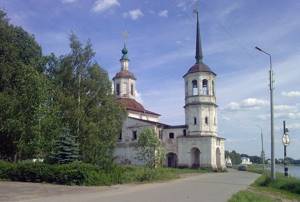
Ecology
Human economic activity pollutes the waters of the Sukhona. Below Cherepovets, Sokol, Vologda, which are large industrial centers of the region, the environmental situation is considered unfavorable.
Since ferrous metallurgy is developed in the Vologda region, Sukhona is forced to receive more than 170 thousand cubic meters of untreated industrial wastewater every day.
In 2007, Pelshma, the left tributary of the Sukhona, was recognized as the dirtiest river in the Northern Dvina basin due to the fact that the Sokolsky pulp and paper mill discharges wastewater into it.
Traditional logging also played a role in aggravating the unfavorable environmental situation. Since the Sukhona was used for rafting for hundreds of years, its bottom is covered with sunken logs. Due to the decomposition of organic woody debris, there is not enough oxygen in the water, especially in winter, and the flora and fauna of the river suffer as a result.
In the area of Veliky Ustyug, the Sukhona riverbed is currently being cleared and deepened.
Transport and roads
In the Vologda region, almost all transport is represented, except for the metro. In total, communication routes of different types in the region have the following length:
- Highways – 15,600 kilometers (of which 650 kilometers are federal highways);
- Water shipping routes – 2115 kilometers;
- Railway tracks – 1890 kilometers;
- Trolleybus – 49;
- Trams - 24.
There are trams only in the city of Cherepovets, trolleybuses run in Cherepovets and Vologda.
Federal highways are: M8 - Kholmogory Moscow - Arkhangelsk, which is the most important and busiest, in addition, it is also included in the European route E 115. Federal roads A114 and A119 are important. Both begin in Vologda, the first leads to Novaya Ladoga (Leningrad Region), the second to Medvezhyegorsk (Republic of Karelia).
The condition of regional and internal roads in the Vologda region is quite difficult to characterize. Here everything is approximately the same as in other regions of Russia - in some places there are very bad roads. A fairly significant portion of the total length is made up of unpaved roads, the condition of which depends on their load, time of year, weather conditions and other factors.
Railways play an important role in passenger and freight transportation in the region. There are direct directions to many large cities of Russia (Moscow, Murmansk, St. Petersburg) and others. The largest railway junction is located in Vologda.
A large number of cargo transportations are also carried out by waterway, for example, the port in the city of Cherepovets is one of the largest on the Volga-Baltic waterway. The North Dvina water system is also important. Passenger transportation is also carried out along the river, but their share compared to other transport is not very significant.
The only international airport in the Vologda region is located in the city of Cherepovets. It was opened in 1933 and can accommodate aircraft types of 3-4 classes (with a take-off weight of up to 30 tons). That is, the international airport in Cherepovets does not accept many modern large aircraft (for example, Sukhoi Superjet 100, Il-96), although this does not mean that they are unable to land there. Thus, in 2013, a Boeing 737 made an emergency landing at Cherepovets airport.
Also in the Vologda region there are the following airports or airfields:
- Vologda - receives helicopters and a number of airplanes, there are regular flights to Moscow. Has federal significance;
- Veliky Ustyug - the airport provides exclusively domestic air transportation to Cherepovets, St. Petersburg or Moscow. Can receive helicopters and aircraft of 3-4 classes;
- Kipelovo Air Base is a military airfield where Tu-142MK and Tu-142MR anti-submarine aircraft are based.
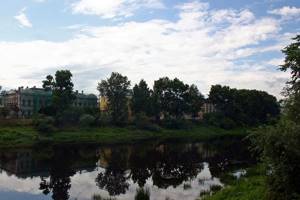
Lakes
Like a huge fairy-tale animal, the local land directs the energy of its mirror lakes into the harsh sky of the northern region. 101 lakes occupy a total area of over 20 hectares. Most of them are small in size, have a distinctive landscape and picturesque surroundings. At the same time, they act as one of the regulators in maintaining the balance of the geo- and ecosystems of the park.
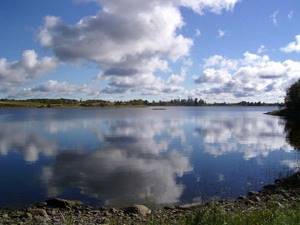
Ferapontovskoe Lake
The main part of the lakes is concentrated in the Prisheksninskaya lowland, the basins of the Kirillovskaya and Belozerskaya ridges. The deepest of them are:
- Sodoshnoye Lake - 40 m;
- Ferapontovskoye Lake - 27 m;
- Borodaevskoye Lake - 27 m;
- Siverskoye Lake - 26 m.
Lake Pereshnoye is of particular importance - it is the standard of lakes in the middle taiga, its depth is 2.1 meters. Based on the nature of water exchange, lakes can be divided into several types: floodplain, drainage, drainless, flowing, mixed.
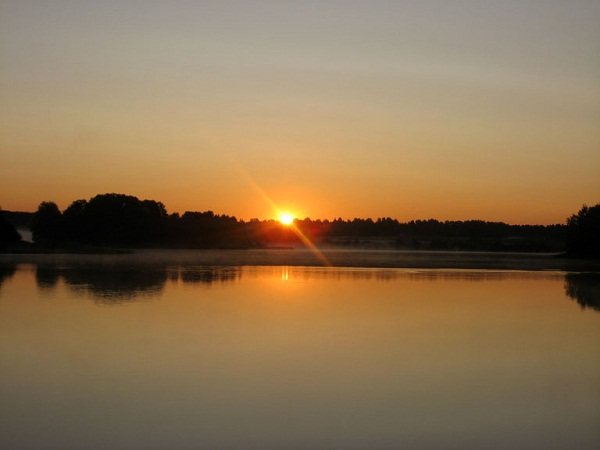
Holy Lake
Based on their origin, the park’s lakes are divided into:
- glacial (Dolgoe, Itkolskoe, Palshemskoe);
- karst (Orlovo, Borovoe);
- lakes formed in depressions of moraine-hilly terrain (Pankovskoe, Yumpash);
- lakes formed as a result of natural erosion (many of them are located in the valleys of the Itkly and Pidma rivers).
Flora and fauna
The flora of the Vologda region is absolutely characteristic of the southern and middle taiga - almost the entire territory of the region belongs to these zones. Forests occupy a significant part of the region. In the central part of the region, forests occupy about half of the area, and in the southeast and northwest in some places up to 85% of the territory.
The most common types of trees include spruce (several species), pine, fir, birch (two species), aspen, and there are also trees such as alder (two species), linden, elm, oak, maple, hazel, ash, larch . Quite a lot of berries, in particular the most common are blueberries, lingonberries, cranberries and blueberries. Especially in the swamp area.
The fauna is also typical and there are no unique species here: elk, wolverine, hare, brown bear, fox, wolf, marten, badger, squirrel, beaver, raccoon dog, wild boar. Among the birds, the most typical representatives are partridge, hazel grouse, black grouse, woodpecker, lark, oriole, wood grouse, woodcock, nightingale and others. Among the birds of prey in the Vologda region you can find osprey, white-tailed eagle, golden eagle, sparrowhawk, common buzzard and others.
The reservoirs contain all types of fish that are typical for these latitudes of North-West Russia. The most common species are pike perch, pike, perch, roach, bleak, and ide. In total, there are 57 species of fish in the Vologda region. Fishing in the region can be considered quite interesting, both in terms of the presence of interesting reservoirs and in the species composition of fish.
Sorovskoye Lake
Lake Sorovskoye is located parallel to the Kirillov-Belozersk highway and is considered one of the largest full-water basins of the Borodaevsky group. The regional center, Kirillov, is located southeast of the lake. Sorovskoye is the source of the Borodava and Sora rivers; it is fed by numerous streams and rivulets. Nearby is Ferapont and a local monastery, where believers regularly come.
A popular leisure activity is fishing. There are many types of fish:
- bream;
- crucian carp;
- cod;
- silver bream;
- roach;
- tench;
- vendace;
- smelt
Fast water exchange and good flow prevent the water surface from becoming overgrown. Its area is 181 hectares. The greatest depth is noted in the southeast of the bottom - 12 meters. The length of the entire coast stretches for 11 km. Despite the yellow-green tint, the water is clean and conducive to a beach holiday.
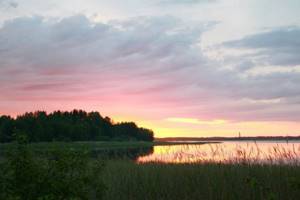
For tourists
Almost all types of tourism are common in the Vologda region: estate, event, environmental, educational, etc. The number of tourists who visit the region annually has been consistently more than two million since 2013.
In total, in the Vologda region there are 777 cultural and historical monuments, about 3,600 objects of historical and cultural heritage have been identified, and there are 28 museums. Most tourists come to Vologda and Cherepovets, with Veliky Ustyug not far behind them.
There are a huge number of attractions and interesting places in the Vologda region; we will not list them in this article - it will take up too much space, and this article is an overview. But if you are thinking about a trip to this region, then we can say for sure that you will not be bored. Regardless of your preferences, be it a comfortable stay in a hotel and trips to museums or relaxing in a tent on the river bank.
There are a large number of natural attractions, especially the Russian North National Park and the Darwin Biosphere Reserve. In total, in the Vologda region there are two hundred specially protected natural areas, which occupy 6% of the region’s area - this is a fairly serious indicator.
On our website you will find a list of attractions in the Vologda region, interesting routes, places for recreation with tents, for fishing, descriptions of museums, urban ensembles and much more.
Traveling along the Sukhona
Traveling along the largest and most significant river of the Russian North takes several days, and we will take a virtual walk and see what the Sukhona River of the Vologda Region looks like on the map.
Source
Sukhona is born from Lake Kubenskoye. It is in fact a reservoir - a reservoir of fresh water, which is used by residents of the surrounding areas.
About 30 rivers and rivulets flow into the lake, but only two flow out - Sukhona and Bolshoi Puchkas. Bolshoi Puchkas separates from Lake Kubenskoye 7 km southwest of the Sukhona, winds for a long time through flat terrain and merges with the river eight kilometers from its source.
Until now, scientists cannot agree on the status of Big Puchkas. Some consider it a tributary. Others argue that the Sukhona is one of the few rivers in Russia that has two sources.
Upstream
In the upper reaches, the Sukhona flows to the southeast, after the village of Kalitino it gradually turns south.
To the mouth of the Lezha, the river makes its way through a low-lying valley; a wide treeless floodplain is formed along the riverbed, representing water meadows or wetlands. In the spring, during floods, many kilometers of floods form here.
After the high water has receded, the width of the river in the upper reaches is no more than 200 meters.
Middle current
At the confluence of Vologda, the river bends and heads to the northeast, without changing its direction until the very mouth.
If in the area from the confluence of the Lezhi to the village of Shuiskoye the banks are still flat and rise gradually, then further to the mouth of the Totma they grow up to 15 meters in height, the forest thickets approach the very edge of the water, and the bed of the Sukhona narrows to 150 meters.
In spring, at the mouth of Lezha and Vologda, you can observe an interesting natural phenomenon. Both rivers fill the Sukhona so much during high water that it begins to flow in both directions: part of the water turns back and ends up in Lake Kubenskoye, while the other continues to flow in the direction of Veliky Ustyug. This natural phenomenon lasts an average of two weeks every year.
The river in its middle reaches is replete with rifts and rapids – “overshoots” in the local dialect – as well as islands.
There are 130 rapids in total on the Sukhona. The most famous: Kopytovsky, Cow Ford, Koryto, Harrow, Popoluzha, Sturgeon, Rzhanik, Zhelezny, Zhidyatino.
Stone Elk
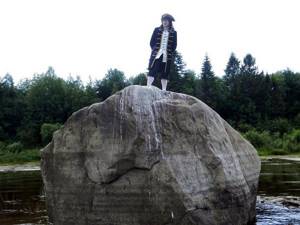
9 kilometers downstream from Totma, above the surface of the Sukhona, the Elk stone rises, outwardly similar to the head of an elk. Its dimensions are 8x4 meters. At 2 meters it is visible above the water, at 2 meters it goes under water. They say that on the stone itself there is a depression in the form of a hoof print of this animal.
The stone also has another name – the Tsar’s Table. According to legend, Tsar Peter I himself deigned to dine on it during one of his travels. Theoretically, this is possible, as up to 10 people can be accommodated here.
Nearby is a smaller stone called Cow.
Grandfathers Island
Not far from Totma (7 km upstream) there is a large island of Dedov, covered with taiga forest. The length of the island is 1.5 km, width 500 m. It rises 10 meters above the surface of the water and is never flooded during high water.
The islands of Babii and Vnukov are located nearby, but they are not so large.
Downstream
From Totma, the Sukhona continues its journey in a northeastern direction to Veliky Ustyug, where it merges with the Yug River. At the place where they unite, the Northern Dvina River is born. Its name literally means "double".
In the lower reaches of the river, the bedrock banks become even higher and approach the water closer, and the channel narrows. The flow speed in some areas increases to 5 m/s, which is comparable to the speed of mountain rivers.
Below the village of Poldarsy, the river flows through a canyon, which is a tectonic outcrop. The height of the steep banks reaches 80 meters.
The banks are dominated by forests, which occupy about 70% of the entire catchment area.
The width of the channel ranges from 100 to 150 meters, reaching 400 meters in some areas.
Vaskin's key
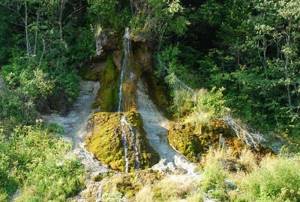
Vaskin Key waterfall.
A landmark of the river is the small Vaskin Key waterfall at the 87th kilometer from the mouth, which flows from a cleft in the coastal rock and has not dried up for several hundred years.
The spring originates in the deep Devil's Lake, which is located nearby, and comes to the surface from the steep bank of the Sukhona.
There is such a legend about the appearance of the waterfall: a devil named Vaska, in his anger, hit the cliff with his fist and split it. From there he hammered the key, later named Vaskin.
Opoki
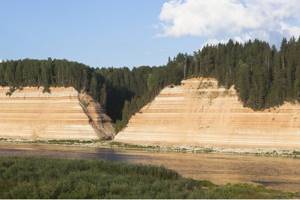
Opoki.
70 km from Veliky Ustyug, near the mouth of the Strelna River, near the village of Priluki, there is the most famous and dangerous rocky threshold Opoki, 1.5 km long.
The word "opoka" means "rock" in the local dialect. Above the threshold there really is a sheer cliff consisting of layered rocks: limestone, dolomite, marl. Its height is 60 meters, which is comparable to a 20-story building.
Worship cross
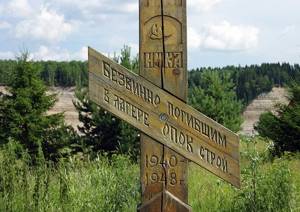
Monument to the dead. Opoki. Sukhona River.
In Opoki the river has a sharp bend, forming a sharp elongated cape, at the end of which there was a Gulag zone. In the harsh climate between 1943 and 1947, 1,100 prisoners built a navigable dam with a lock here.
The results of their titanic efforts were destroyed by ice drift and washed away by floods in 1947. The remains of the failed structure are still visible from the water. Now on the site of the camp there is a worship cross with the inscription “Those who suffered without guilt.”
Geyser
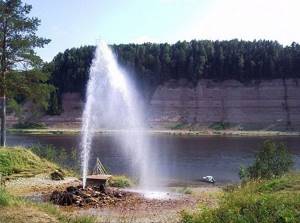
Geyser on the Sukhona River.
About a kilometer from Opok, on the right bank of the Sukhona, a geyser shoots out of the ground, attracting the attention of tourists. The jet is forcefully ejected from a well drilled in 1941 as a result of geological surveys. The water in the source is slightly mineralized and has a brackish taste.
